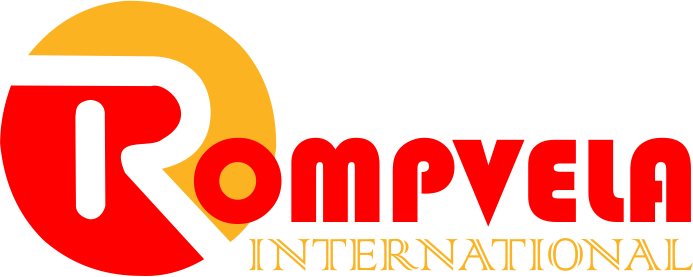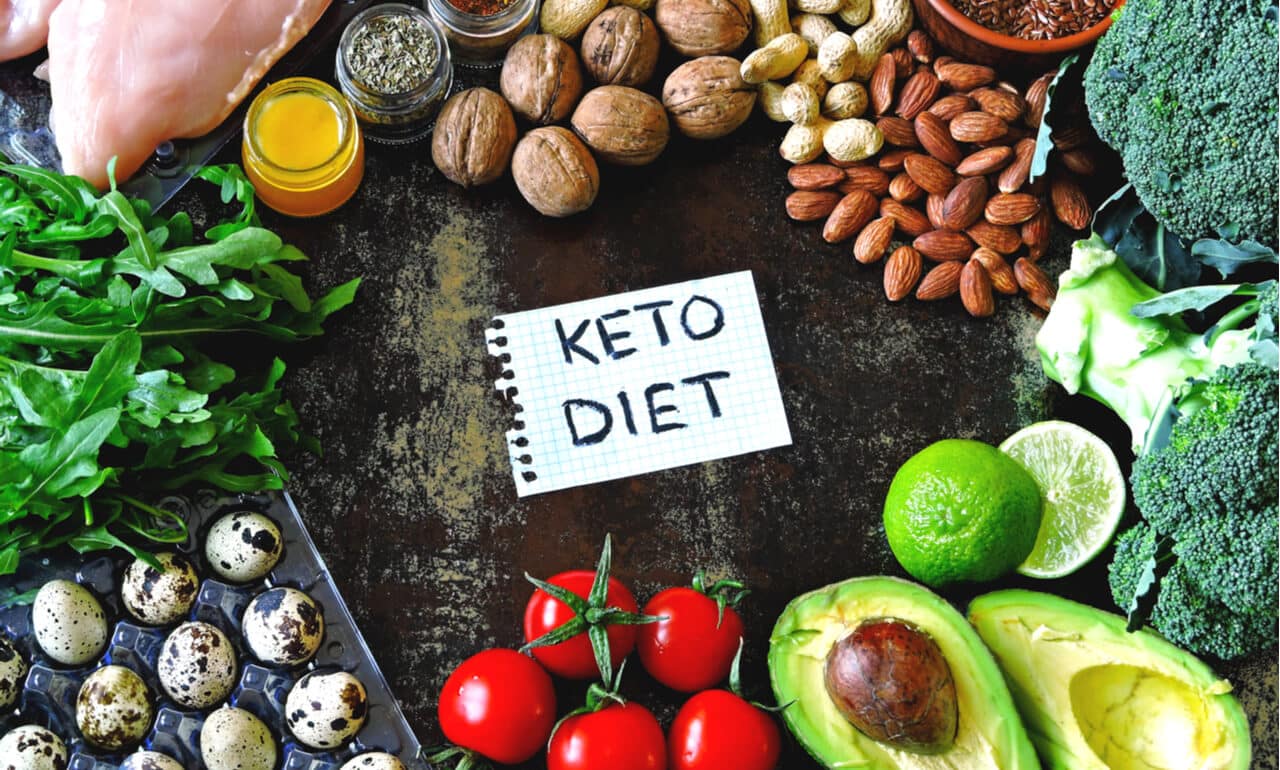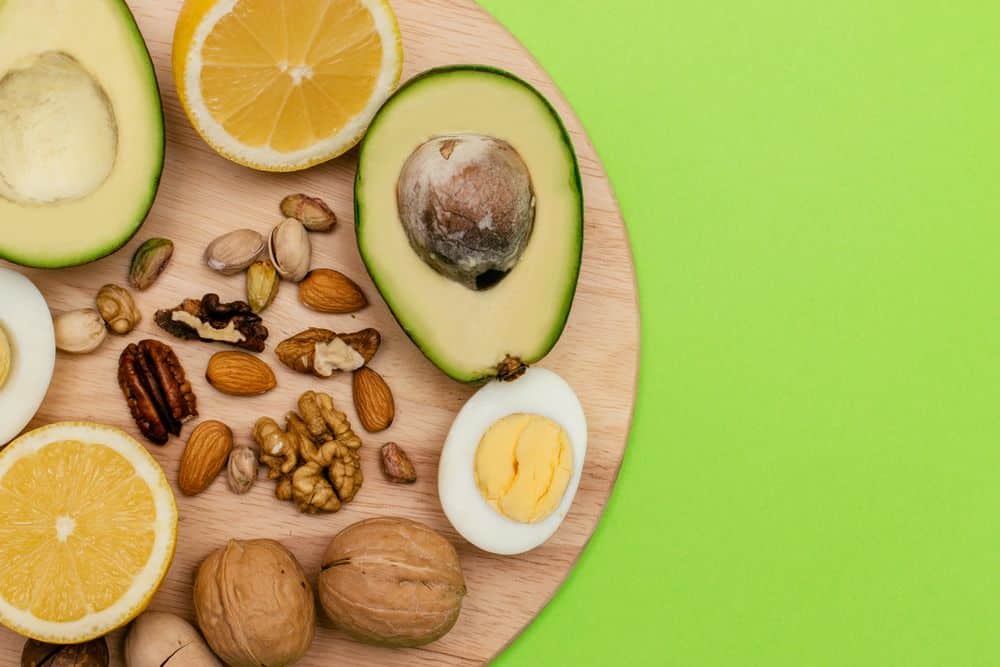[ad_1]
Unless you’ve been living under a rock, you must be aware that the keto diet has become the uber-trendy diet in recent years. A high-fat, low-carb meal plan has taken over the diet industry as it helps you lose weight quickly. A Keto-approved diet plan aims to keep zero carb intake throughout your day. For anyone entering the keto diet, they’ll notice a drastic drop in bloat and water weight. The ketogenic diet has therapeutic uses, endorsed on social media and promoted by celebrities. Or is it just another hazard of diet culture? Let us find out.
What is Keto Diet?
A keto or ketogenic diet is deficient in carbohydrates, moderate proteins, and high in fat. The diet is mainly 65% – 80% fat, while the remainder is protein and carbs. The goal of keto diets is to make your body burn fats for fuel. Back in the 1920s, people used the keto diet to treat children with epilepsy. Over time, it has become popular as a weight-loss diet.
Different variations of the keto diet exist. They differ in consuming food groups – carbohydrates, protein, and fat.
- Standard ketogenic diet: The daily meal plan of a person following a normal ketogenic diet consists of only 10% carbs, 20% protein, and 70% fats.
- High protein ketogenic diet: The protein ratio increases to 35% while decreasing the daily fat consumption to 60% and carbs to 5%.
- Cyclical ketogenic diet: You can follow a cyclical keto diet with five days for the standard keto plan and two days for high carb intake.
- Targeted ketogenic diet: You can enter into an alternative keto plan if you’re physically active. It allows carb consumption before a workout.
Ketosis: The Mechanism Behind Keto Diet
Your body enters a metabolic state (ketosis) by following a keto diet. Instead of carbohydrates, the body burns and breaks down fat as a daily energy source. When you limit carbohydrate consumption, the blood glucose levels begin to fall. That is because fatty acids are released from adipose tissue converted into ketone bodies. These ketone bodies produced from fats prioritise body fuel rather than glucose. In simple terms, when you deprive the body of carbohydrates, it begins to search elsewhere for energy. In this case, fats burn. And this is what helps you to lose weight.
Foods to Eat During Keto Diet
Keto diet follows 70%-75% fat, 20% protein, and 5%-10% carbohydrates. Some people may eat only 20 grams of carbs a day to achieve maximum ketosis. Anything containing carbohydrates and sugars is off-limits. All kinds of meat and poultry are naturally devoid of carbs, making them ideal for keto diet plans. Here are a few keto-friendly foods and some snacks you can enjoy every once in a while.
1. Fatty seafood
Rich in heart-healthy omega-3 fats, salmon is a fatty fish that qualifies for a keto meal due to its low carbs. One hundred grams of salmon contains 21.6 g protein, 5.93 g fats, and zero carbs. You may also go for other options, including shrimp, sardines, tuna, scallops, and trout, rich in high-quality protein.
Edible shellfish such as mussels, lobsters, oysters, clams, and crab are low-carb, protein-rich, and keto-friendly. For example, 100 grams of crab meat provides 20 g protein, 1.76 g fat, and zero carbs.
2. Keto-safe Veggies
Most vegetables are high in carbohydrates, but zucchini, tomatoes, cucumbers, cauliflower, bell peppers, and squash are low in carb ratio. Non-starchy vegetables are low in carbohydrates and calories but high in fibre to keep your gut healthy. Above-ground vegetables are usually the best options for a keto diet. You can include lettuce, spinach, eggplant, asparagus, and olives. One hundred grams of spinach, lettuce, and asparagus contain no more than 2 grams of net carbs.
3. Nuts and Seeds
Walnuts, pecans, almonds, hazelnuts, pine nuts, peanuts, and macadamias are the best nuts to choose from while on a keto diet. That is because nuts are laden with polyunsaturated and monounsaturated fats without any high carbohydrates. For example, one hundred grams of macadamia nuts contains 75.8 grams of fats.
You can include seeds such as sunflower, sesame, hemp, pumpkin, flax, and chia seeds in your keto diet. Oil-rich seeds add flavour and crunch to your monotonous keto meals without compromising fat content. However, make sure to consume seeds and nuts in moderation.
4. Berries
Most fruits are high in carbs, but berries are an exception. They’re relatively lower in carbs and are rich in fibre. Strawberries, raspberries, blackberries, and blueberries make a great addition to your Keto Meal plan. However, the intake of blueberries must be in moderation as they contain the highest amount of carbs out of all berries. One hundred grams of raspberries gives you 5 grams of net carbs, while 100 grams of blueberries have 12 grams of net carbs. The bonus is that berries keep your sweet tooth satisfied.
5. Dairy and Eggs
Add more cheese to your keto meals. It’s high in fat and has fewer carbohydrates. Plus, as long as you’re not allergic, you can include full-fat yoghurts, cottage cheese, sour cream, butter, and whipping cream. Harder cheese like Parmesan has fewer carbs than soft cheese. Swiss cheese or semi-hard cheese are good options too. The solid fat content in dairy takes time to digest and helps you stay full for a more extended period. As a result, it can help you snack less. Furthermore, dairy enriched keto meal supplies vitamin D, phosphorus, and calcium.
Eggs are the staple of the ketogenic diet. Eggs provide protein, antioxidants, and other essential nutrients with low carbs and high fats. Hence, one large egg gives you 6 grams of protein and no more than 1 gram of carbs. Whole eggs, egg yolks and egg whites are the main protein and fat sources in keto breakfasts.
6. Oils and Fats
Around 70%-80% of daily energy comes from fats in a keto diet. Plant-based oils are the purest fat source as they contain zero carbs, making them a must-have in keto diets. Your low-carb lifestyle requires oil for cooking, dressing, and frying. One tablespoon of extra virgin olive oil contains 14 grams of fat and zero carbohydrates. Another higher fat option is coconut oil. It is high in saturated fats and used in keto recipes.
Ghee is famous in Indian households. Organic cow ghee is a beneficial fat source and ketogenic diet-friendly. It can be used in baking, sautéing, deep-frying, etc. Butter, avocado oil, and animal fats are options worth trying.
7. Beverages
It is OK to consume unsweetened coffee, green tea, black tea, and non-dairy milk alternatives. Every once in a while, you can enjoy sweeteners like sucralose and stevia. Make sure to drink hard liquor, champagne, and dry wine sparingly. Although diet sodas are technically keto drinks, they’re not a healthy choice. Another option is sparkling water which is free of net carbs.
8. Snacks
A few slices of bacon, a few olives, and a slice of cheese is an excellent low-carb choice. In addition, you can snack on a small portion of nuts such as Brazil nuts, pecans, and macadamia nuts. A popular snack choice in the ketogenic diet is the lowest carb vegetable sticks with dip. The dip usually contains high-fat dipping sauce, sour cream, or cream cheese. Heavy whipping cream and berries without adding sweeteners or sugar make an enjoyable keto snack.
Vegetarian vs Non-Vegetarian Keto Diet
Instead of fish and meat, vegetarian ketogenic diets rely on seeds, nuts, avocados, and coconut oil. The low-carb eating pattern in non-vegetarian meals focuses on including fatty fish, meat, and eggs. Unlike the non-vegetarian keto diet, a vegetarian diet requires extensive planning to meet nutritional needs. The vegetarian keto diet is not suitable for everyone, especially athletes, as it is highly restrictive. Foods to eat in a vegetarian keto diet include:
- Non-starchy vegetables
- Nut butter
- Plant-based oils
- Tofu and nutritional yeast
- Herbs and seasonings
The foods eliminated in the vegetarian keto diet are present in the non-veg version—for example, meat, poultry, fish, and shellfish. Individually, a vegetarian diet and a keto diet have weight loss benefits. When combined, they offer additional weight loss benefits.
Potential Side Effects of Keto Diet
Before beginning the keto diet, you should know the possible side effects—particularly keto flu. The keto flu refers to a collection of symptoms that appear within the first 2-7 days of entering a keto diet. Your body’s response towards ketosis is similar to flu symptoms, thus the name keto flu. It can last anywhere between a week to a month for an average person. After that, you may experience a cluster of symptoms such as diarrhoea, nausea, muscle aches, fatigue, and headache. In addition to keto flu, here’s the list of side effects that may help you decide whether or not you’d like to try the keto diet.
1. Keto breath
Keto-breath is a common side effect of the ketogenic diet and leads to a distinct taste or odour in the mouth. Some people describe it as a strong odour that mimics nail polish remover and a metallic taste. However, a 2015 study shows that keto breath is different from common bad breath. Keto breath results from ketosis, whereas bad breath arises from bacterial buildup in the mouth.
2. Constipation
Constipation is a common side effect of the ketogenic diet and other low-carb diet plans. As you cut down high fibre foods like veggies, fruits, beans, and whole grains for curbing carbohydrate intake, you’re indirectly saying goodbye to prebiotic fibre. A reduction in prebiotic fibre alters the composition of intestinal bacteria, leading to constipation.
3. Reduced Athletic Performance
A recent study has noted that athletes following the keto diet show poor performance in high-intensity workout compared to those eating a high carb diet. During ketosis, the body is in an elevated acidic state that reduces its ability to perform at maximum potential.
4. Stress on Kidney
Protein metabolism is the kidney’s primary function. Unfortunately, most keto beginners end up taking up more protein with fats. When you start consuming way more protein than you need, the kidneys suffer more. It could harm kidney functions.
5. Mood Fluctuations
Carbohydrates play a salient role in producing serotonin, a brain chemical that regulates mood and helps you sleep better. Unfortunately, you may not get enough serotonin synthesis when you’re on a keto diet, leading to mood fluctuations.
Vegetarian Indian Keto Sample Diet Chart
| Time | Food |
| Early morning | Black coffee/ green tea 100ml with a tablespoon of butter or ghee |
| Breakfast | 100 g Paneer Bhurji or 1 glass of full fat soya/nut milk smoothie |
| Mid-morning | 50g celery or berries with 2 tablespoons peanut butter |
| Lunch | Tandoori soy tikka 50g with cauliflower 100g and yoghurt 100g |
| Evening snack | Coconut 30g with 1 tablespoon sesame seeds, and 100ml coconut milk |
| Dinner | 100g paneer with 50g spinach and 2 tablespoons coconut oil salad |
Non-vegetarian Indian Keto Sample Diet Chart
| Time | Food |
| Early morning | Black coffee/ green tea 100ml with a tablespoon of butter or ghee |
| Breakfast | 3 boiled eggs or omelette |
| Mid-morning | 50g cucumber/berries with 2 tablespoons peanut butter |
| Lunch | Mutton seekh kabab 200g with mint coriander raita 100ml |
| Evening snack | Coconut 2 tablespoons with 1 tablespoon sesame seeds milkshake 100ml |
| Dinner | Chicken tikka 100g with 2 tablespoon sesame seed oil |
Health Benefits From Keto Diet
Manage Appetite
Studies indicate that the keto diet automatically reduces your appetite. Consistently following a low-carb diet with more protein and fats makes you consume fewer calories. When you’re feeling full, you won’t be looking for extra snacks to munch on. Thus, you end up eating fewer calories.
Increased Good Cholesterol Levels
One of the prime methods of adding good cholesterol to your body is through healthy fats. Since keto diets involve high consumption of fats dramatically increase high-density lipoprotein or good cholesterol. Furthermore, high HDL levels lower the risk of heart disease.
Reduces Blood Sugar Levels
A study states that regularly following a keto diet lowers blood sugar. Since the eating plan cuts carbs off, the glucose levels in the body reduce. As you bring down the carb consumption through the keto diet, less sugar enters the bloodstream.
Fat and Weight Loss
Cutting carbs is the fastest way to reduce weight and burn fats. Studies analysing the keto diet explain that rapid weight loss usually occurs within 1-2 weeks. Moreover, fat loss is evident in the abdominal cavity region. The Keto diet helps you lose weight without being hungry.
Boost Mental Health
Keto diet increases the intake of healthy fats like omega-3s that can improve learning ability and mood. The diet promotes the production of a ketone form called beta-hydroxybutyrate. It supports long term memory function.
Prevents Yeast Infections
The glucose in urine is the breeding ground for yeast infections. The ketogenic diet reduces candida or yeast infections by lowering glucose to pass out through urine. In addition, intake of coconut oil in the keto diet supplies lauric acid to your body. As a result, it has antimicrobial properties and can kill off the infection-causing fungus.
Who Needs a Keto Diet?
The ketogenic diet has gained attention in recent years. People have been following it widely used to lose weight quickly. Regardless of their health conditions, people opt for the keto diet to lose weight. However, the true purpose of the popular ketogenic diet is much lesser-known. In 1921, the ketogenic diet was started to treat epilepsy in children. Research suggested that a high-fat, low-carb diet may reduce seizures. The low-carb content is beneficial as it may reduce the excitability of the brain. That prevents it from causing seizures.
Studies also suggest that the popular keto diet may help in other medical conditions.
- Dementia
- Alzheimer’s disease
- Brain injury
- Acne
- Cancer
- Amyotrophic lateral sclerosis
- Cancer
- Metabolic disorders
However, the ketogenic diet must be started only when prescribed by a physician. The minimum period for following a keto diet is 2-3 weeks. The maximum is upto 6-12 months. The body functions have to be closely monitored by the physician during the course.
Who Should Not Opt for Keto Diet?
Studies suggest that patients with some diseases may avoid the keto diet. It may result in adverse health outcomes.
- Liver diseases
- Osteoporosis
- Kidney disease
- Genetic defects in fat metabolism
- Pancreatitis
- Carnitine deficiency
- Porphyria
If you have any of these conditions, it is advisable to avoid the keto diet. Talk to your medical healthcare professional and dietitian about alternative ways to lose weight.
Keto Diet: Things to Remember
- When trying the keto diet, restrict the intake of grains, sugar, tubers, fruits, legumes, sauces, and alcohol. Stick to low-carb food recipes and check the food labels for hidden sugars.
- Avoid any drastic diet changes. Take one step at a time, and don’t overdo it. Before starting a keto diet, plan your meal according to your health and requirements. The next day, following a strict carb diet and jumping into pasta, cereals, and sandwiches won’t work.
- Not drinking enough water is a common mistake among keto beginners. The drastic decrease in carbohydrates accompanies by dehydration. It would help if you began your morning with a large glass of water. Sipping water regularly throughout the day is also beneficial.
- People underweight or with excessively low weight problems should refrain from keto diets. They require energy from carbohydrates. Thus, a low-carb diet carries detrimental effects for underweight individuals.
- Keto diet is strictly not for people with diabetes type 1 or type 2 as they are taking Metformin supplements and other medications. The Keto diet has adverse effects on metformin medications.
- Pregnant and lactating women are advised not to follow keto diet plans. Going on a low-carb diet during pregnancy might affect the weight and development of the baby. It may also cause nutritional deficiencies, and the body fails to meet the dietary demands of milk production.
The Bottom Line
The Keto diet follows a high fat, moderate protein, and low carb eating plan. Before taking a swing at the keto diet, it is essential to consult a healthcare professional. Weight loss, diet, and health are complex subjects that require adequate knowledge. Keto’s rigid rules force your body to start burning fat for energy. It certainly helps you lose weight quickly. However, keto is not for everyone. Keto diet side effects include constipation, keto flu, keto breath, mood fluctuations, diarrhoea, brain fog, and kidney stress.
A typical hack among keto dieters is to add dairy products like butter, hard cheese, whipping cream, and Greek yoghurt for an ideal dietary fat supply. As long as it’s unsweetened and free of added sugars, you can keep the carb content in check. What you can eat on a diet includes meat, fatty seafood, oils, high-fat dairy, nuts, and a selection of berries. Remember, moderation is the key.
Frequently Asked Questions (FAQs)
Q. What foods can I eat on the keto diet?
A. Keto is a low-carbohydrate diet plan. A keto diet consists of 70% fats, 20% proteins, and 10% carbs per day. You can eat food low in carbohydrates like fatty seafood, nuts and seeds, dairy and eggs, and keto-safe vegetables like zucchini, tomatoes, cucumbers, cauliflower, and squash.
Q. Can you eat bananas on keto?
A. No, bananas are a rich source of carbohydrates. Even though banana is rich in good nutrients, you cannot include them in your keto diet. One banana contains about 31 grams of carbs, nearly the total carbohydrates you can take per day in the keto diet.
Q. Is peanut butter keto?
A. Yes, you can include peanut butter in your keto diet. However, the peanut butter needs to be plain. Also, you need to eat it moderately. Two tablespoons of peanut butter contain about 5 grams of carbohydrates. Hence, you can have a moderate amount of peanut butter per day without affecting your keto.
Q. What can I drink on keto?
A. You can drink keto-friendly liquids like water, caffeine-free diet soda, low-carbs dairy products like unsweetened almond milk, energy drinks with zero carbs, keto smoothies with avocadoes, egg yolks, and high-fat yoghurt.
Q. Can I drink alcohol on keto?
A. Alcohol consumption is never safe if you want to manage weight and lead a healthy lifestyle. However, the keto diet does not restrict moderate and rare consumption of alcohol. You can drink whiskey, gin, rum, or any other pure form of alcohol. You can also try hard liquor, unsweetened wines, and light beer. But you must always keep in mind to drink moderately. Excess alcohol is bad for health.
Q. What can you eat for breakfast on keto?
A. There are several breakfast options for a keto breakfast. For example, you can eat three eggs or an omelette for breakfast. Non-vegetarians can eat keto-friendly granola with protein-packed plain yoghurt and fruits like blackberries, raspberries, and star fruits.
Q. Can you eat bread on keto?
A. Yes, you can eat bread during your keto diet. However, regular bread like white, oat and wheat bread have high carbohydrates. Hence, avoid those breads and buy gluten-free, high fibre bread with low carbohydrates.
Q. Can I eat potatoes on keto?
A. If you are on a keto diet, potatoes are a big No-No. Potatoes are starchy vegetables that contain more digestive carbohydrates. You can have potatoes once in a while, but they cannot be a part of your regular keto diet.
Q. Is Rice keto-friendly?
A. No, rice is not a part of the keto-friendly diet. However, keto-friendly rice called konjac rice is safe for consumption during your keto diet. It is full of fibre and is very low in net carbohydrates. Therefore, it is a great substitute for white rice, and it also tastes good.
Q. Can you eat pasta on keto?
A. Yes, you can eat pasta during the keto diet. However, you need to ensure that you do not consume the traditional pasta made using wheat flour. There are many alternatives, keto pasta substitutes made by spiralling vegetables. You can also purchase low carbs pasta alternatives like shirataki or kelp noodles.
Q. Are tomatoes keto?
A. Yes, tomatoes are keto-friendly. Tomatoes are a botanical fruit, and every 100g of tomatoes have only 2-3 grams of carbohydrates. Hence, they are low-carb foods that easily fits into your keto diet.
Q. Is cheese allowed in keto?
A. Yes, cheese is considered a perfect keto-friendly food. Cheese contains high fat, low carbs, and moderate proteins. You can choose harder cheese like parmesan cheese over soft cheese to further cut down carbs.
Q. Is broccoli a keto?
A. Yes, broccoli is a keto-friendly food. One cup of broccoli consists of only 4 grams of net carbs. Furthermore, it is also rich in fibre and protein. You can use broccoli in stews, soups, and casseroles. It tastes delicious and imparts various health benefits.
Q. Are onions good for keto?
A. Yes, onions are good for keto. Although onions have 0g of fat, it is a keto-friendly vegetable. You can enjoy ¼th of red onion daily. Remember that onion is one of those keto vegetables in which carbs can add up fast.
Q. Can you drink milk on keto?
A. You should avoid dairy milk. Dairy milk contains a lot of carbohydrates. Hence, it is not keto-friendly. However, if you choose to add milk to your diet, ensure that you limit the intake. That is because milk has high fats and may not work well with a keto diet.
Q. Is Mushroom good for keto?
A. Yes, a mushroom is keto-friendly. Mushrooms are low in carbohydrates and low in sugar. People generally use mushrooms like oysters, white buttons, shiitake, and portobello in keto diets
[ad_2]
Source link




